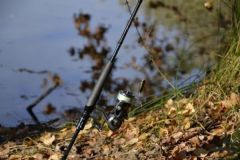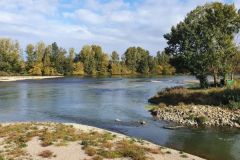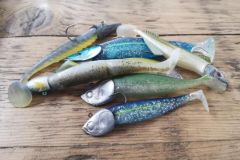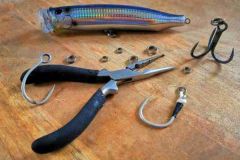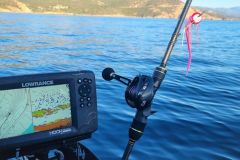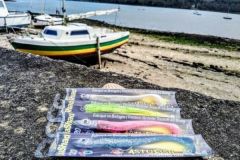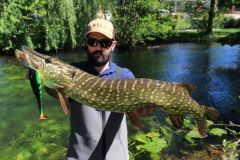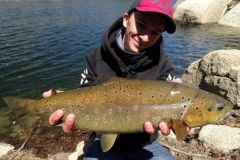Analyze the structure and its nature, to prospect
The first thing to do, of course, is to analyze the structure you wish to prospect: its nature, composition, depth and exposure. These four factors will give you an overall idea of the problems you are going to encounter and thus enable you to use the right lure to overcome them.
When I talk about the nature of the structure, I am talking about its physiology: tree, rock, underwater or surface (denser) sea grass.
Fishing for trees
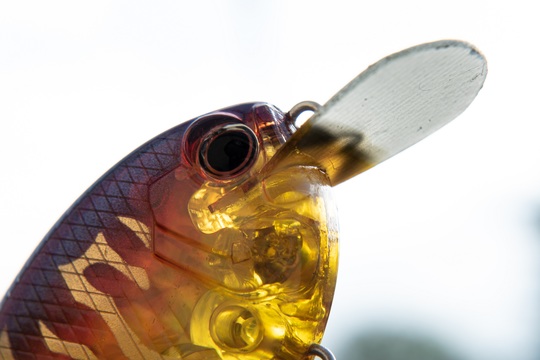
This structure is for me one of the most pleasant to fish, because it allows me to use lures that I particularly like: topwater, crankbait, slug and rubberjig.
A stickbait or a popper allows me to fish the outside of the tree while the crankbait excels at crossing branches without getting stuck. The flatside squarebill models are my preference, the less pronounced wobbling keeps the two triples in line with the bib, and the latter, thanks to its square shape, easily moves the lure away from the branches it hits.
The slug allows me to easily penetrate deep into the heart of the tree by skipping it. And finally, the rubberjig is the ideal tool to precisely comb submerged trees. Strike King's Tour Grade Skipping and Comeback models are my weapons of choice. The shape of their head offers a more vertical position of the hook and allows me to efficiently hook the fish's palate for a strong extraction.
Fishing the rock and scree
These piles of stones are often the favorite spots for our carnivores during their resting phase. I use here mainly reaction techniques: topwater, crankbait, jerkbait, or swimbait (Hard and Soft 6"+).
The stickbait or buzzbait on the surface, the choice is made according to the weather conditions. No rain or wind = stickbait. Rain and/or wind = buzzbait.
The crankbait, yes, again... Here, you have to opt for Roundbill models with more or less round bodies. These models have the particularity to have a more "nonchalant" swimming and allow to insist more easily on positions.
The jerkbait is a must here, vary the models and sounds to find the right lure, but its effectiveness on these spots is widely proven.
The swimbait, whether it's a soft or hard version, is a perfect lure to provoke. Used on sizes of 6 inches and more, it works wonders on apathetic fish.
Fishing the seagrass beds
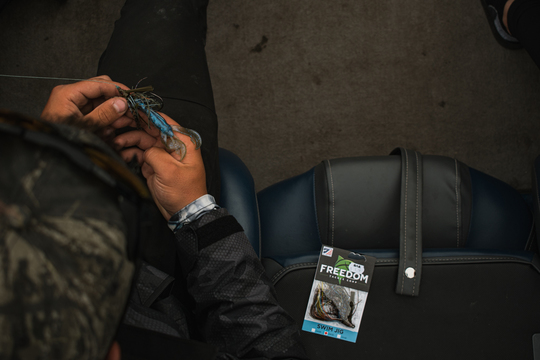
These areas are pretty unique areas, as you imagine more than you see what is going on there. Chatterbait, swimjig, paddle shad, lipless crankbait, and spinnerbait are the 5 lures I use the most on these spots.
The grass beds are generally hunting areas for the carnivorous, a linear animation is then according to me the best solution. It allows to cover a maximum of ground in a short time and is simple to set up.
There is another formidable technique in these conditions, let your lure fall gently into the vegetation, once your lure "blocked", pull forcefully without a sharp blow so that it can extract itself from the grass. This is when you often get a hit.
Fishing for surface grass beds
These areas are designed to get on your nerves. Most of the fish in these areas are not used to being disturbed, so attacks can be violent. On the surface, all families of frogs can be used . Under the film, texas rig, and rubberjig are the two techniques that accompany me constantly.
Control the weight of the lure
Vary the lures according to the season and the turbidity of the water and that's it. I mentioned above the depth, it will have a real impact on the way you fish. Although the choice of lure is very important, its presentation is twice as important. The weight of the lure is therefore a point to be seriously mastered.
When choosing your lure, make sure it's heavy enough to reach your spot, but light enough to not create doubt when you draw it in, especially if you're fishing with lures that you let rest on the bottom.
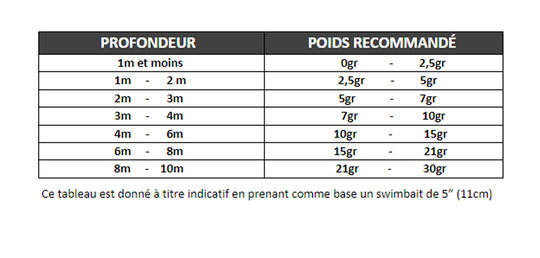
Taking into account the exposure
Very often forgotten, the exposure of the post is however a decisive aspect of your choice of lure. This is especially true for the noise of the lure. Indeed, you have probably noticed (especially at sea) the noise that can create the waves breaking on the rocks. Now imagine that a fish has to spot your lure in all that noise...
You're starting to get the hang of it, so try making more noise with your lure.






